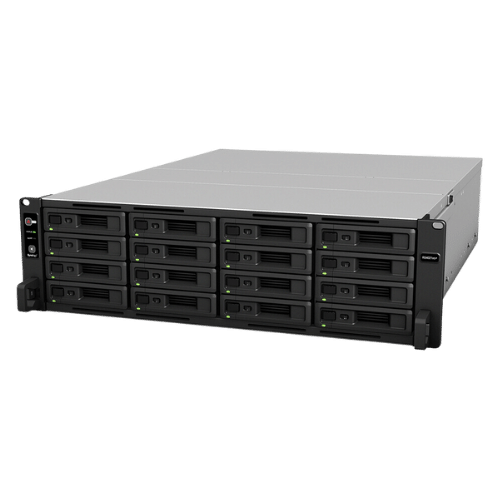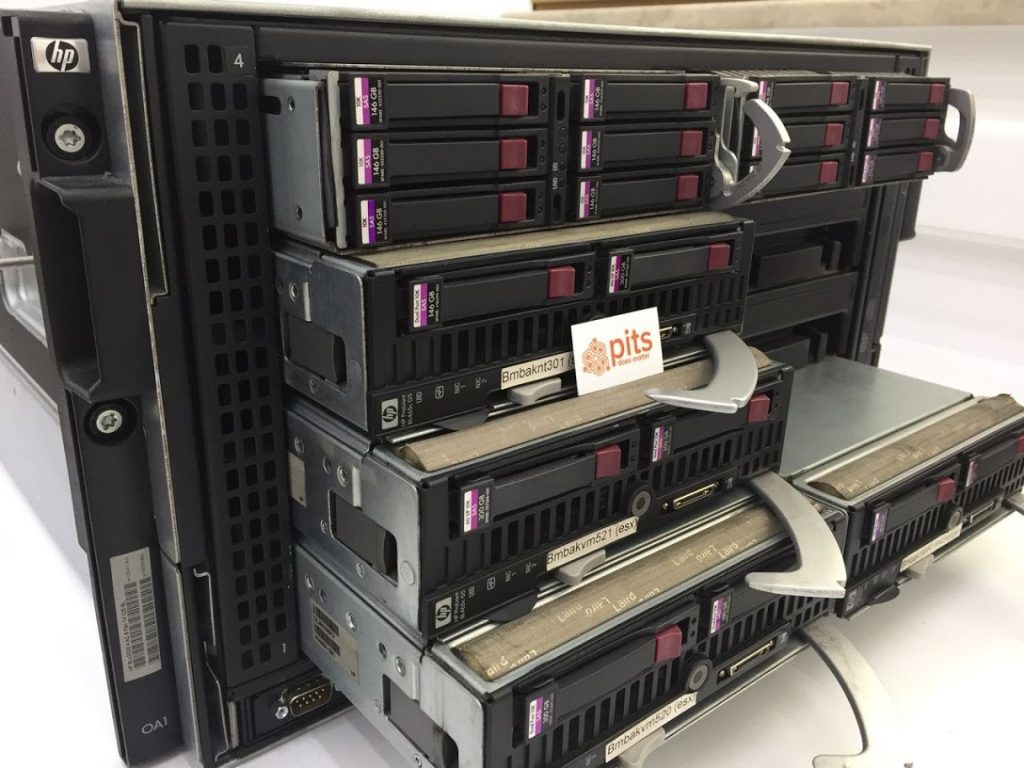Three types of server form factors are commonly used in data centers and other IT environments: blade servers, rack servers, and tower servers. Each type has its advantages and disadvantages, and choosing the right one for your organization depends on several factors.
In this article, we’ll take a closer look at each form factor to help you make an informed decision. Additionally, we will compare and contrast blade, rack, and tower servers in terms of their features, performance, and use cases.
Now, take a look at first what a rack server is.
What is a Rack Server
A rack server is a rectangular server designed to be mounted on a server rack. These racks are typically 19 inches wide and can hold multiple rack servers stacked on top of each other using rails or shelves.
Rack servers are known for their compact size, high-density computing power, and scalability. They are the most common type of server used in data centers as they allow for efficient use of space and better airflow for cooling.
Additionally, rack servers are relatively easy to install, maintain, and upgrade. They also offer a wide range of customization options, such as CPU, memory, storage, and networking capabilities.
Rack servers commonly serve web hosting, manage databases, handle virtualization environments, and execute high-performance computing tasks.
The heat dissipation in rack servers can be a concern, as the high-density design can lead to overheating if not properly managed. However, this can be mitigated by using efficient cooling systems and proper airflow management.
Data loss and downtime can also be a concern if one server fails, as it can affect multiple servers within the rack.

What is a Blade Server
A blade server is a small, modular server that fits into an enclosure (referred to as a chassis) alongside other blade servers. These enclosures have shared power, cooling, networking, and management infrastructure.
Blade servers are designed for high-density computing, allowing organizations to fit more computing power in a smaller space. They also offer easier scalability as additional blades can be added to the chassis without taking up much extra space.

Like rack servers, blade servers also allow for the customization of components such as CPU, memory, storage, and networking. However, blade servers typically have a higher initial cost compared to rack or tower servers due to the need for a chassis.
Blade servers are ideal for virtualization environments, data centers with limited space, and organizations that require high-performance computing capabilities. They also offer centralized management, making it easier to monitor and control multiple blades from one location.
One potential drawback of blade servers is their limited expandability. As the chassis has a finite number of slots, organizations may need to invest in additional enclosures if they require significant expansion.
Blade server crashes can also have a more significant impact compared to rack servers, as multiple blades within the same chassis could be affected.
What is a Tower Server
A tower server is a freestanding server that resembles a typical desktop computer tower. It can be placed on a desk or floor and does not require specialized mounting equipment like racks or enclosures.
Tower servers are typically larger compared to blade and rack servers, but they offer more expandability options. They can accommodate multiple processors, hard drives, and expansion cards, making them suitable for organizations with growing computing needs.
These servers also tend to have lower initial costs than blade servers, as they do not require a chassis or specialized mounting equipment.
Tower servers are commonly used in small businesses, remote offices, and organizations that do not have dedicated server rooms or data centers. They also offer the potential for future expansion without the need to invest in additional enclosures.
One of the main disadvantages of tower servers is their larger physical footprint compared to blade and rack servers. It can be an issue for organizations with limited space or those looking to maximize their data center’s efficiency.

Tower server recovery can also be more time-consuming and challenging than that of blade servers, as each server needs to be individually managed and restored in case of a crash.
Blade Server vs. Rack Server

Both blade and rack servers are for high-density computing, but they differ in terms of their form factor and infrastructure. Blade servers offer more compact designs and shared infrastructure, making it easier to manage multiple blades from a central location. On the other hand, rack servers have a traditional rectangular shape that can be easily stacked on racks.
Additionally, blade servers often require proprietary components due to their modular design, while rack servers typically support standard components that are easier to source and replace.
Rack Server vs. Tower Server

Rack and tower servers also have some distinct differences. As mentioned earlier, rack servers are designed to be mounted on racks, while tower servers can stand alone without any specialized equipment. Additionally, rack servers offer high-density computing capabilities, while tower servers have a larger physical footprint but offer more expandability options.
Blade Server vs. Tower Server

The main difference between blade and tower servers is their form factor. While both are designed for high-density computing, blade servers are modular and require an enclosure for operation, while tower servers can function as standalone units.
Additionally, blade servers offer centralized management and easier scalability, while tower servers have a larger physical footprint but offer more expandability options. The choice between the two ultimately depends on an organization’s specific needs and infrastructure.
Which Server Server Type is Right for You?

When considering which server rack type is best suited for your organization, there are a few factors to consider:
Space
If space is limited, a blade or rack server would be the most efficient option. However, if space is not an issue, a tower server may offer more customization and expandability options.
Scalability
Blade and rack servers are more easily scalable, as additional blades or servers can be added to the existing infrastructure. Tower servers may require additional enclosures if significant expansion is needed.
Management
Blade servers offer centralized management capabilities, making it easier to monitor and control multiple blades from one location. Rack and tower servers may require more manual management.
Budget
Tower servers tend to have lower initial costs compared to blade and rack servers, which require specialized equipment for operation.
Ultimately, the choice between blade, rack, or tower server rack types will depend on your organization’s specific needs and infrastructure. It is important to carefully consider these factors before making a decision.
Data Loss on Servers
One major worry for businesses using servers is the potential for data loss, which can happen due to hardware issues, human mistakes, or cyber threats. It’s vital to have a reliable backup and disaster recovery strategy in place.
Regularly backing up crucial data and storing it off-site helps reduce permanent data loss risks. Monitoring server health regularly and performing maintenance tasks are also essential to prevent hardware failures.
Data Recovery from All Kinds of Servers
In case of an incident, our server data recovery services can assist in retrieving lost data and decreasing your organization’s downtime. Our expert team specializes in recovering data from various server types, like blade, rack, and tower servers.
Contact us today to discover more about our server data recovery services and how we can protect your organization’s crucial data.
Frequently Asked Questions
Which is better, the blade server or the rack server?
The answer depends on your organization’s specific needs and infrastructure. Blade servers offer more compact designs and shared infrastructure, making it easier to manage multiple blades from a central location. Rack servers have a traditional rectangular shape that can be easily stacked on racks and support standard components.
Can I use tower servers in a data center?
Yes, tower servers can be used in a data center, but they are more commonly used in small businesses, remote offices, and organizations without dedicated server rooms.
How can I prevent data loss on servers?
It is crucial to have a reliable backup and disaster recovery plan in place. Regularly backing up important data and storing it off-site can help mitigate the risk of permanent data loss. It is also essential to periodically monitor server health and perform maintenance tasks to prevent hardware failure.
What types of servers can your data recovery services retrieve data from?
Our expert team specializes in data recovery from different server types, such as blade, rack, and tower servers. Contact us today to discover more about our server data recovery services.
What is a blade server used for?
Blade servers are used for high-density computing and often offer centralized management capabilities. They also require an enclosure for operation and support proprietary components. Additionally, blade servers can be easily scalable by adding more blades to the existing infrastructure.
What is a rack server used for?
Rack servers are also used for high-density computing. They are traditional rectangular shapes that can be easily stacked on racks. They typically support standard components and have a larger physical footprint but also offer expandability options.
Are Tower servers quiet?
Tower servers can vary in noise levels depending on the specific model and components used. However, due to their larger physical size and design, they tend to be quieter than blade and rack servers.
